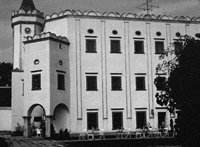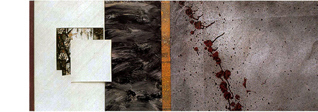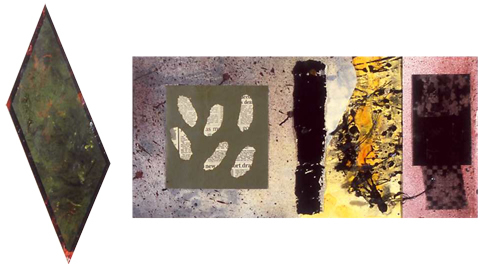text: ludmilla droppova
26th. international painter's symposium, |
 |
|
He makes collages. Collage - a phenomenon within the framework of the history of contemporary art - is a form of plastic art which continues to be vital and alive in the present day with many artists proving its continuing potential. Christopher Jones has proved this for himself: in his concentrated creative work it helps him transform his introspective relation to his surroundings - often those of unfamiliar locations abroad - into artistic shape. |
||
  |
The works he has made at the symposium are typical of his approach - he harnesses elements of the conscious to those of chance and, as I found out in our talks, he relies on three main principles: concrete inspiration, lateral thinking and process. An original intention will be transformed by the interplay between chance and conscious decision-making. Collage is a sympathetic medium for such a method of working, allowing, as it does, found material to be juxtaposed with that fashioned by the artist. The paradox is that on the one hand materials are not brought together entirely by chance and, on the other, their combination does not always appear completely logical: rather, an element of chance or coincidence reveals new possibilities for an initial form that might have been quite carefully established. This leads to a new and particular expression which often fascinates and surprises the artist himself. |
|
In parts of other works whch seem more rationally planned, Jones uses another means of improvisation - paint. Paint freely flowed and arranged with a brush. Here, the process of connecting the conscious and the accidental inclines towards spontaneity. In general terms there are conceptual, expressive and formal aspects to such a process, often with one of these aspects prevailing at a particular point in the development of a piece of work. |
||
Jones's works give the possibility of various interpretations, though the titles of some pieces indicate their content, e.g. Palace & Prison, our interpretation rests on the sense of aloneness in diametrically different surroundings. But it is on the feeling, the sense, rather than the surroundings that we focus. Or perhaps not? For, in a way, we are not sure and the work remains quite open to each of us: our interest is engaged and from that point we can find our own way further into the work to discover what more lies "behind" it. |
||